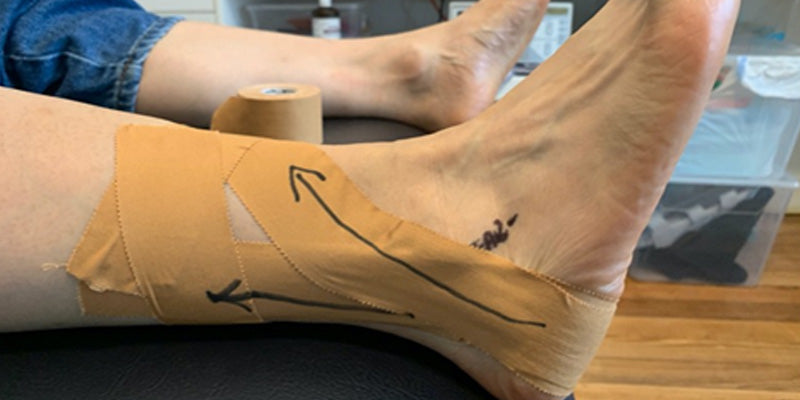HealthCert Education
Physical management for knee, ankle and foot problems and sports injuries
Physical management for knee, ankle and foot problems and sports injuries
Master the essentials of "Physical Management for Knee, Ankle, and Foot Problems and Sports Injuries", a comprehensive program designed for healthcare providers. This evidence-based course explores the mechanical, clinical, and collaborative management of common lower-limb musculoskeletal conditions and sports-related injuries. From biomechanical principles to diagnostic tools and conservative treatment strategies, participants will gain practical skills to improve patient outcomes. Ideal for primary care professionals, this course emphasises interdisciplinary collaboration, diagnostic precision, and the effective application of therapeutic interventions for chronic and acute conditions.
 4.5 hrs EA | 6.0 hrs RP | 0.0 hrs OM
4.5 hrs EA | 6.0 hrs RP | 0.0 hrs OM
Couldn't load pickup availability
SKU:SHOP-A6MSM
View full details
-

FLEXIBLE TIMING
-

100% ONLINE
-

accredited Course
-

Expert instructor
The Physical Management for Knee, Ankle, and Foot Problems and Sports Injuries course is a meticulously structured program offering a deep dive into the principles and techniques of managing lower-limb musculoskeletal issues. It is divided into five detailed units:
Unit 1: Assumptions, Philosophies, Fundamentals, and Tools
This unit introduces the foundational principles underlying musculoskeletal therapy, emphasising the mechanical nature of injuries and their solutions. Key topics include diagnostic accuracy, the importance of acute pain reduction, and tools for clinical efficiency such as heel lifts, wedges, and taping techniques. Participants will gain insight into the philosophies and tools that enable precise intervention and effective management of lower-limb conditions.
Unit 2: Foot
The focus shifts to common foot problems, including heel pain, plantar fasciitis, and forefoot conditions like Morton's neuroma. The unit covers diagnostic strategies, conservative management tools like orthotics, and the role of biomechanical adjustments in alleviating pain and improving function. Practical interventions such as metatarsal domes and offloading techniques are demonstrated, enabling clinicians to address diverse foot issues effectively.
Unit 3: Ankle
This unit explores ankle mechanics and pathology, including lateral and medial ligament sprains, anterior and posterior impingements, and the importance of dorsiflexion in functional movement. Techniques like weight-bearing lunge tests, targeted taping, and wedge applications are discussed. The module also highlights strategies to manage acute injuries and support recovery through optimal loading and pain management.
Unit 4: Knee
Delve into the complexities of knee pathologies, including medial and lateral ligament injuries, anterior knee pain, and osteoarthritis. This unit introduces stress tests for ligament assessment, taping for patellofemoral pain syndrome, and interventions like wedges for valgus and varus corrections. Practical guidance on managing acute and chronic knee conditions is provided, ensuring clinicians can tailor their approach to individual patient needs.
Unit 5: Role of the GP
This final unit emphasises the GP’s critical role in collaborative care. It covers effective referral pathways, interdisciplinary communication, and monitoring allied health interventions. Practical diagnostic tools and mechanical levers are introduced, empowering GPs to actively participate in patient management while enhancing coordination with physiotherapists, podiatrists, and other specialists.
This course equips healthcare professionals with the knowledge and skills to diagnose, treat, and collaborate effectively, ensuring comprehensive care for lower-limb musculoskeletal problems.
- Evaluate physical management for common chronic knee, ankle and foot problems or sports injuries.
- Recommend the role of GP in the collaborative management of patient care with a physiotherapist or podiatrist for patients with chronic knee, ankle and foot problems.
All degree qualified medical practitioners.
CPD Hours:
- Education hours: 4.5
- Reviewing performance hours: 6.0
- Measuring outcome hours: 0.0
Accreditations:
Royal Australian College of General Practice (RACGP) #450747
Australian College of Rural and Remote Medicine (ACRRM) #31158
Study Mode:
100% online
Study duration:
10.5 hrs self-paced

ABOUT THE PRESENTER
Mr Ronnie Bateman
This course is presented by Mr Ronnie Bateman.
Mr Bateman graduated with a Bachelor of Physiotherapy and returned to study a Bachelor of Podiatry and a Masters of Musculoskeletal Physiotherapy. Mr Bateman has worked in several sectors including elite sport, aged care and disability, occupational, public health and private practice.
As a podiatrist, Mr Bateman enjoys the challenge of complex foot/ankle conditions, in addition to assisting more proximal pathologies (such as knee pain) by altering distal biomechanics. As a physiotherapist, Mr Bateman considers evidence-based research and “old-school” manual therapy options in an attempt to make maximum improvement in the shortest timeframe. As a lower-limb musculoskeletal practitioner, he can apply top-down (physiotherapy based) and bottom-up (podiatry based) approaches.

